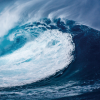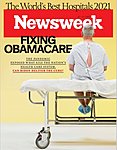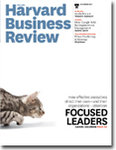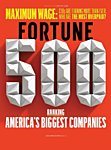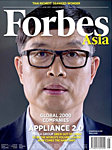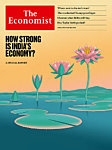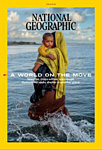1.Prologue
There are several big differences between Japanese magazine culture and American magazine culture.
The first thing that comes to mind is the difference in printing quality. Many U.S. magazines are printed onto flimsy, thin paper, and the printing itself leaves much to be desired. As a result, they seem designed to be thrown away as soon as you are finished reading. Meanwhile, Japanese magazines are printed using superior printing techniques onto superior paper. The binding is reliable—meant to be kept for the long-term.
The second difference is how consumers purchase magazines. In the U.S., many readers order a yearlong subscription (or longer). Their readership is not predicated on what’s being featured that month—they are essentially donating their hard-earned money in support of a magazine’s editorial mission. As for magazine publishing companies, significant discounts are offered to long-term subscriptions in order to secure their own long-term stability. In many cases, these long-term subscriptions are discounted 50% or more.
Meanwhile, Japanese readers seem to pick and choose depending on the content of that issue, or in the case of women’s magazines, who happens to be on the cover.
In the U.S., subscribers have their magazine(s) delivered directly to their homes. Perhaps this is partly because bookstores and convenience stores are not as ubiquitous as they are in Japan.
In Japan, convenience stores and bookstores can be found anywhere, and so many readers buy their magazines at retail locations.
Furthermore, in the U.S., the spread and advancement of the internet since the turn of the millennium has led many publishers to convert their print magazines into digital/online-only magazines. In a land as spread out as the U.S., it can be costly to physically print a magazine and mail it all the way to the reader. The shift to digital has been a purely rational decision.
On the other hand, in Japan you have what’s called the resale price maintenance system (saihan seido), which supports the publishing industry printing out a great variety of magazines. This system has its detractors, but when compared to the state of print in the U.S., it has its advantages.
Another major difference between how magazines are published in Japan and in the U.S. is how advertising sales are conducted.
In the U.S., each magazine publishing company has its own advertising sales division, while in Japan, publishing companies are also backed up by major advertising agencies in addition to the in-house advertising sales team.
In Japan, when it comes to major corporate advertisers, the gatekeepers are usually the major advertising agencies: Dentsu, Hakuhodo, ADK, and the like. The agency follows a general advertising strategy set by the client, and chooses which magazines are the best places to advertise.
This means that it’s up to magazine publishing companies to put themselves in the good graces of the advertising agencies.
As a result of this dynamic, all mass media in Japan—not just magazines, but also television stations, radio stations, and newspapers—must curry the favor of sponsors and their gatekeepers.
This, in turn, means that you will never catch the Japanese mass media reporting “inconvenient truths” about major corporations/potential advertisers or major advertising agencies.
Meanwhile, magazines and newspapers in the U.S. are based on the subscription model more than they rely on advertising revenue, so they do not need to curry favor with advertisers and advertising agencies. The other side of that coin is that magazines will often pay an excessive amount of lip service to their readers.
The rise of internet publishing has shaken 20th century models of mass media to their core, forcing outlets to question their very reason for being.
Over the past few years, internet advertising has started to outgrow mass media advertising, and I submit that a larger media revolution is coming down the pike.
2.News and general interest magazines
●TIME
The American institution with the iconic red border on the cover. The word “time" reflects how the magazine captures the tone of the day and the sign of the times, but when it was first launched in 1923, the idea was that it could be read in just a short time by busy businessmen. The magazine is perhaps best known for its annual “Person of the Year" issue and the “Time 100", an annual list of the 100 people shaping the times.
●NEWSWEEK
Newsweek, along with Time, are two of America’s leading weekly magazines covering politics and society. In addition to the U.S. edition, the magazine publishes an international edition as well as numerous regional additions in other languages—often with different content. With the rise of internet media after the turn of the century, readers began looking less and less to weekly magazines for breaking stories, and in response Newsweek has steadily been publishing more and more opinion columns and commentary. In 2012, the magazine discontinued its print edition and shifted its focus to digital, but it has since re-launched its print edition in 2014. The magazine has led a turbulent life, much like America itself.
●Reader’s Digest
America’s favorite general-interest family magazine, which collects mostly lifestyle articles from other magazines. It has maintained a conservative editorial policy since its first issue, and with its Middle America, unpretentious, almost folksy tone, it’s no wonder it’s been beloved by generations of American families. The magazine is portable and pocket-sized, about half the size of a standard magazine.
●Foreign Affairs
This magazine published by an American think tank covers international affairs and American foreign policy as the leading authority in its field. Numerous academics, former American secretaries of state, and cabinet ministers from various countries regularly contribute to the magazine. American political scientist Samuel P. Huntington’s Clash of Civilizations originally began as an essay published in Foreign Affairs. You don’t usually think of Americans on the whole as being interested in international affairs, but the magazine’s circulation has been on the rise after 9/11.
●The Big Issue
This street magazine was founded by two Brits who wanted to do something about the rising number of homeless people in London. They were inspired by a similar street magazine sold only by the homeless in the U.S. The idea was that by giving the homeless an opportunity to earn an income through legitimate means, you could help them reintegrate back into society. The Japanese edition has been published since 2003, and is mostly sold in front of train stations and on street corners in urban areas. The name “The Big Issue” refers not just to the elephant in the room that is homelessness, but to the oversized dimensions of the magazine itself.
The online version can be read here.
3.Business/finance magazines
●Harvard Business Review
A global management magazine published by Harvard Business Publishing, a subsidiary of Harvard University. It covers a wide range of business-related topics including leadership, business organization, negotiation, strategy, marketing, finance, and so on. There is also a Japanese edition called Diamond Harvard Business Review operated by publishing company Diamond, Inc. It is comprised chiefly of translated articles, and in addition has original articles published in Japanese.
●Fortune
Fortune is a business magazine started by one of the co-founders of Time in 1930, right around the beginning of the Great Depression. It is especially known for its rankings of companies and business leaders: the Fortune 500 is a ranking of American companies by sales, while the Fortune Global 500 ranks global companies. Also popular are its rankings of the Best Companies to Work For, Businessperson of the Year, and 40 Under 40.
●Forbes
This American business magazine owned by the Forbes family has the motto “The Capitalist tool", and is geared toward an affluent demographic. It publishes articles on finance, investing, and marketing, as well as tech, science, politics, and law. Especially noteworthy is its annual ranking of America’s richest people, the Forbes 400, as well as the Forbes Global 2000, which ranks publicly-traded companies from around the world. A Japanese edition was launched in 2014.
●The Economist
This British business magazine boasts 175 years of history. Its fundamental editorial stance is economic liberalism—concepts like free trade and open immigration. As a rule, the magazine has no bylines, as the editorial team works as a collective to put forth the magazine’s singular voice. Other than articles written by special contributors, all of the editorials and articles are effectively presented as anonymous. Side note, The Weekly Economist published by Mainichi Publishing is unrelated.
4.Science and nature magazines
●National Geographic
This 130-year-old monthly magazine was launched by the National Geographic Society, which aimed to spread the study of geography. It covers science, geography, history, and culture from around world, and lately has been focusing on themes like environmental issues, climate change, and endangered species. The quality of the photography is photo book-quality, and the magazine is an authority when it comes to photojournalism. Its back issues have become coveted collector’s items.
●Nature
The British magazine Nature is one of the world’s leading multidisciplinary academic journals alongside Science from the U.S. Its readership is mostly researchers and scholars from around the world, and the content is comprised mostly of academic essays along with some commentary and news items. Nature has published many epoch-making scientific discoveries, such as the discovery of X-rays, the structure of DNA, and the discovery of the Ozone layer. Japanese naturalist and ethnologist Minakata Kumagusu started contributing essays to the magazine since his time in the U.K., and managed to publish a total of 51 essays in its pages over the years.
●Science
Science is an academic journal published by the American Association for the Advancement of Science. What sets magazines like Science and Nature apart from their counterparts is their multidisciplinary editorial stance. It publishes mostly original essays alongside science news and opinion about science policy.
Visit the Science Magazine website.
5.Epilogue
When it comes to newspapers, there is something the British call a “quality paper"—a newspaper with high editorial standards that is read by globetrotting elites. Unlike tabloids, which deal in gossip, entertainment, and sports, quality papers are purveyors of news pertaining to international affairs, politics, and the economy. What they lack in circulation, they make up in social influence. Also, they are based on a subscription model rather than advertising revenue.
In the U.K.—a society still affected by the concept of a class system—quality papers include The Times (circulation 440,000) and The Guardian (150,000).
In France, the quality paper equivalent would be the moderate center-left Le Monde (290,000).
In the U.S., The New York Times (1,030,000) and The Washington Post (830,000) can be said to be quality papers, but are distinct in their liberal stance.
The financial paper The Wall Street Journal (2,270,000), with its affluent readership, can also be said to be a quality paper, but as a financial paper, it has a more conservative, market fundamentalist stance.
With a circulation of 2,270,000, The Wall Street Journal boasts the biggest readership in the U.S., even surpassing the national newspaper USA Today.
Looking at the range of U.S. newspapers, most are local papers with a liberal bent, save for USA Today. In California, where KAZOO grew up, the major papers are The San Francisco Chronicle (370,000) and The Los Angeles Times (720,000).
Side note, in terms of conservative American media outlets, Fox News is the most well known.
Moving on, we come to the question of whether or not Japan has any quality papers. The answer is no.
I maintain that this is because that Japan’s elites and intellectuals are no more.
Instead of being defined by political principles or logical commentary, Japanese newspapers are based on the model that emotional responses and pied-piper style scoops sell.
Furthermore, whether it’s the left-leaning Asahi (6,260,000) and Mainichi (3,000,000) or the right-leaning Yomiuri (8,700,000) and Sankei (1,500,000), taken from a global media perspective, these newspapers are all closer on the ideological spectrum than you would expect—lying somewhere between slightly center-left and slightly center-right. This is another reason why Japan does not have any quality papers. (The Nikkei financial newspaper (3,000,000) is center-right.)
Part of the problem is that Japanese newspapers rely more on advertising revenue than overseas quality papers. You will rarely find a paper criticizing the major corporations that sponsor them or the major advertising agencies—especially “DenPaku", short for Dentsu and Hakuhodo.
Cross-ownership is another problem—newspaper companies have control over Japan’s television stations.
At the same time, television stations are effectively put under the control of the government due to broadcasting rights, which means that the government also exercises indirect control over newspaper companies as well.
In addition, looking at this problem from the perspective of international politics, both Japan’s ruling Liberal Democratic Party and its opposition parties can be characterized as center-leftists without a guiding philosophy. That itself is a problem.
Under the circumstances I’ve outlined, it should come as no surprise that news reporting in Japan focuses mostly on trivialities and love-it-or-hate-it type issues.
We live in the midst of a paradigm shift driven by advances in internet communication technology and the AI singularity. I would argue that in such times, the national debate should not be shaped by trivial, knee-jerk judgments of a prime minister’s character, and instead should be a substantive, logical discussion of the issues.
I can only hope that quality media outlets soon emerge in Japan and serve as forums for rational debate.
And in order for that to happen, I submit that Japan must embrace the idea of social class—specifically the idea of the intellectual class.

